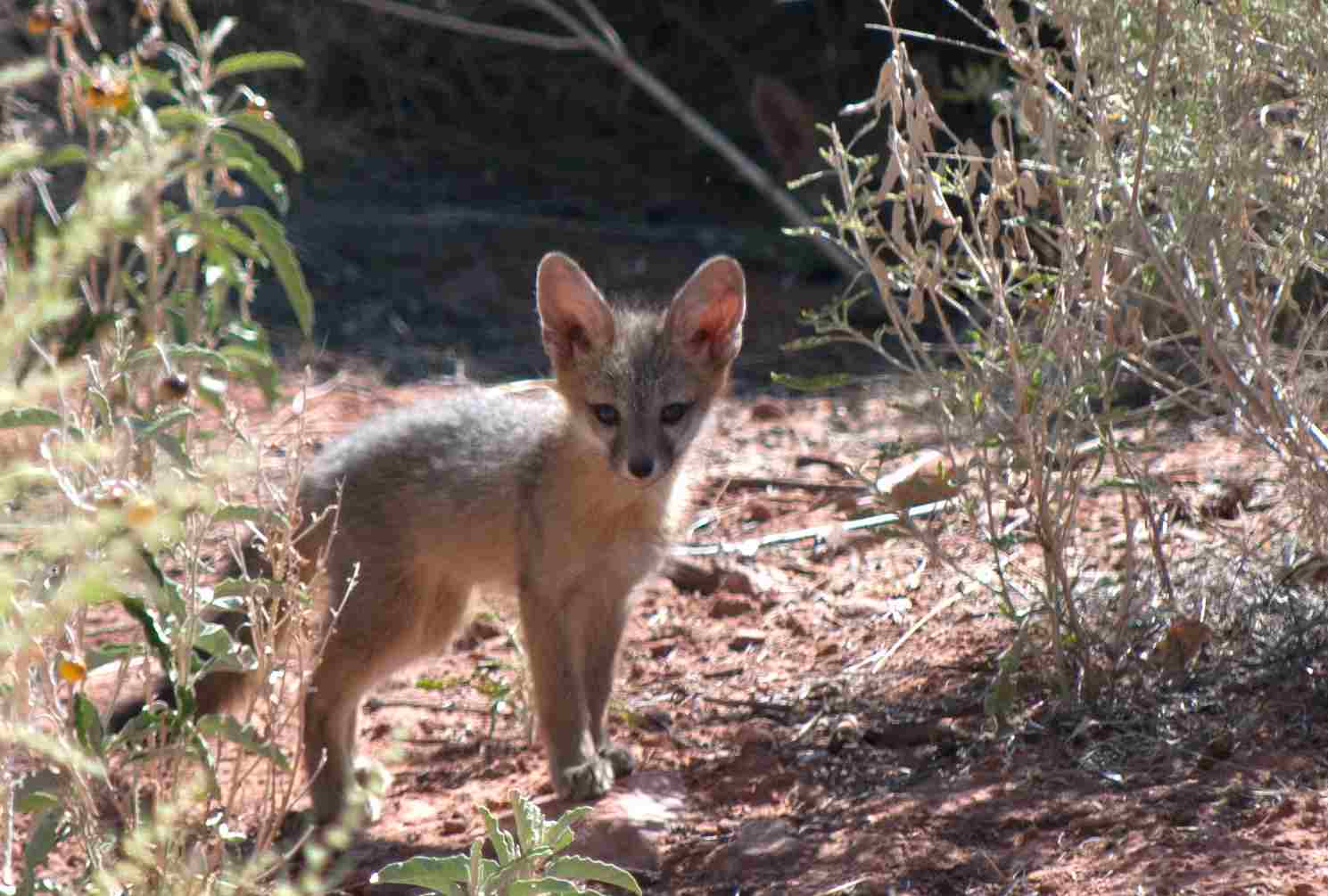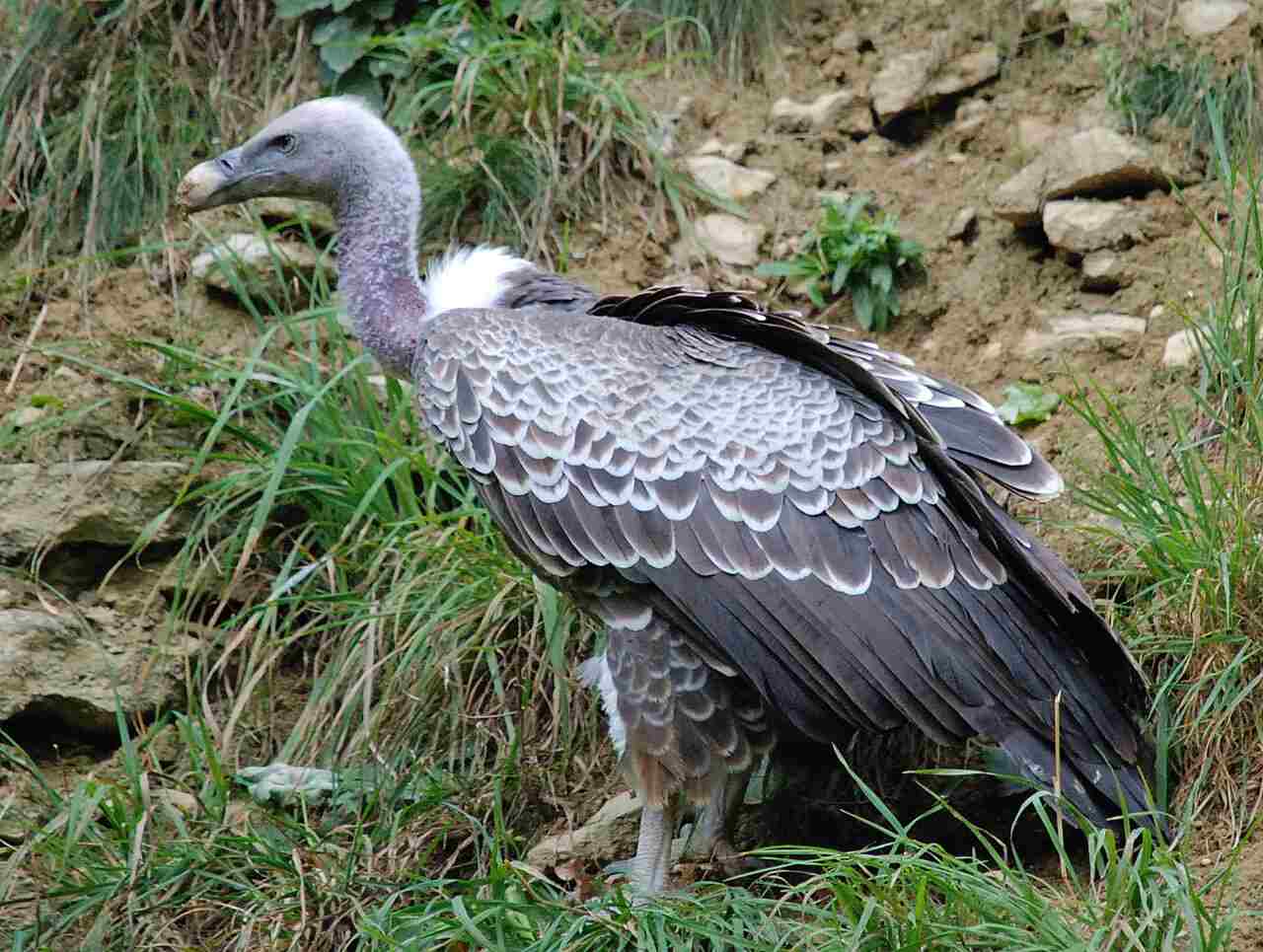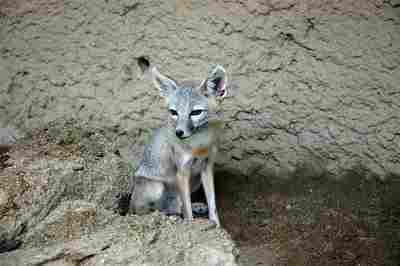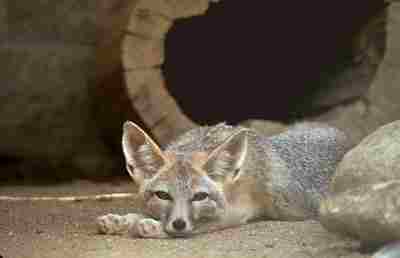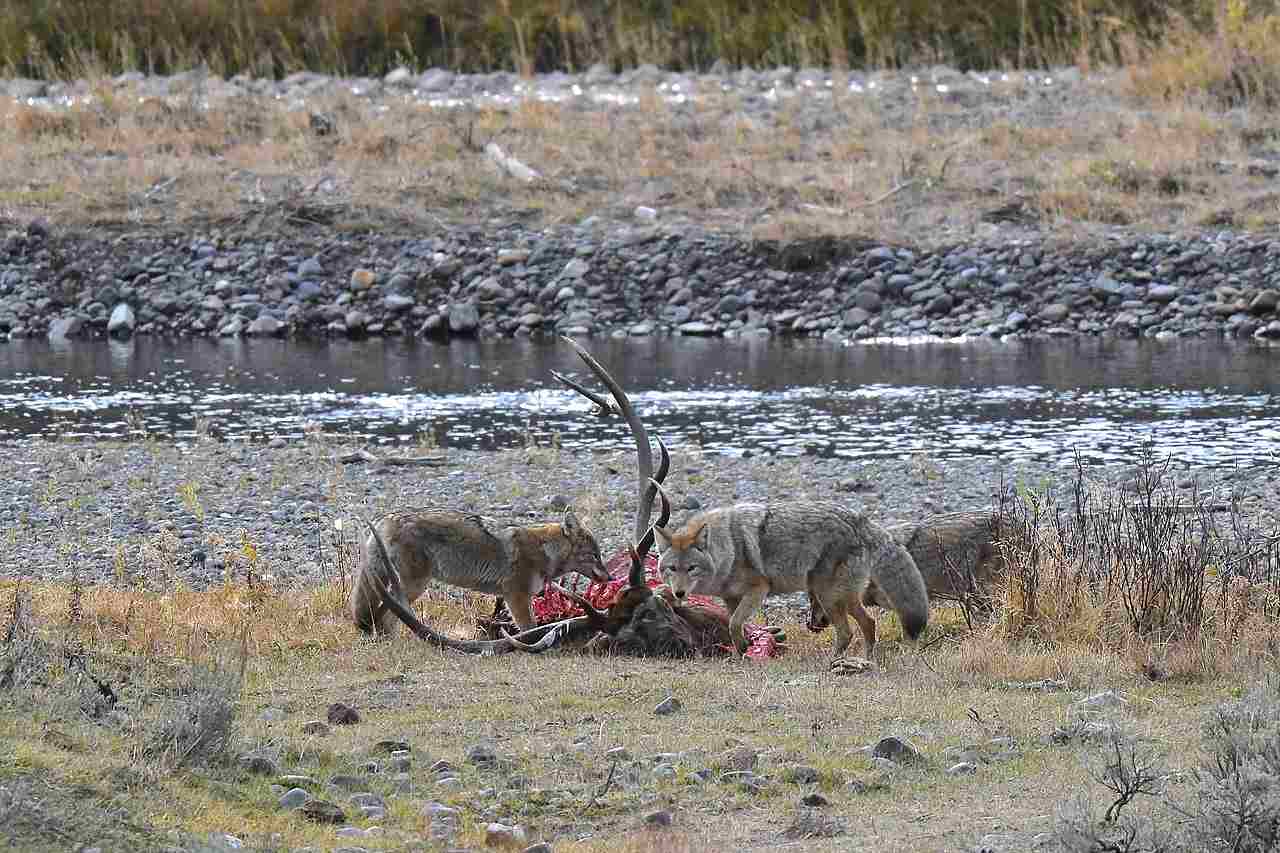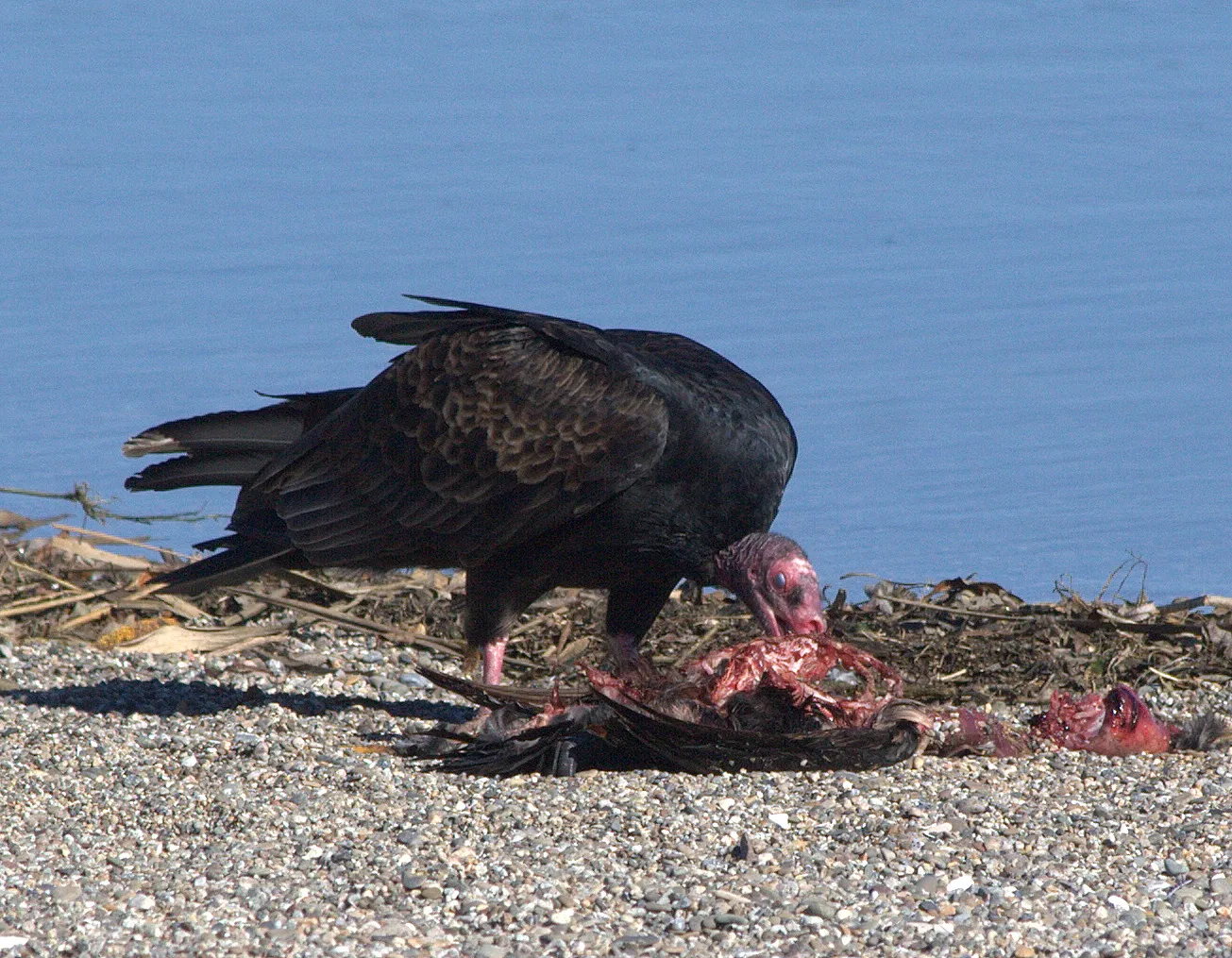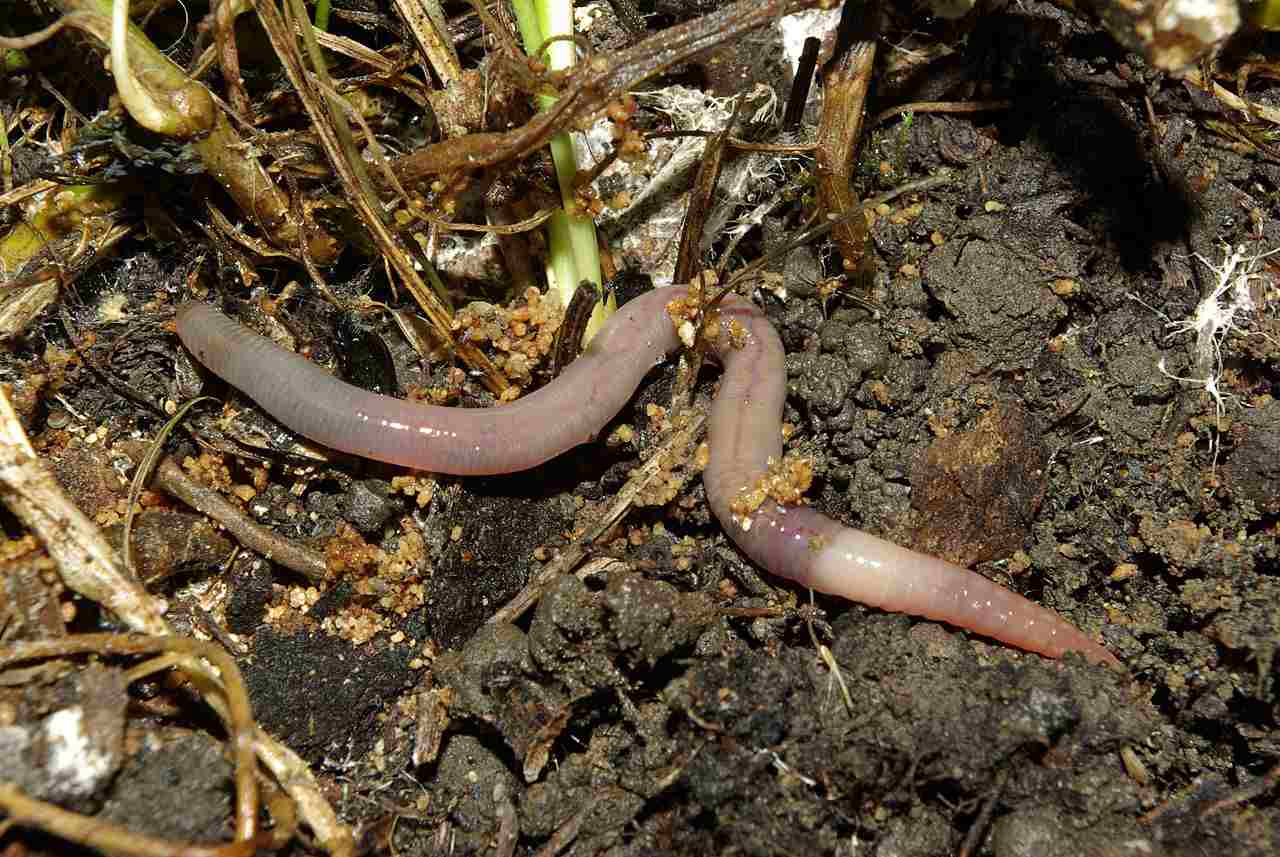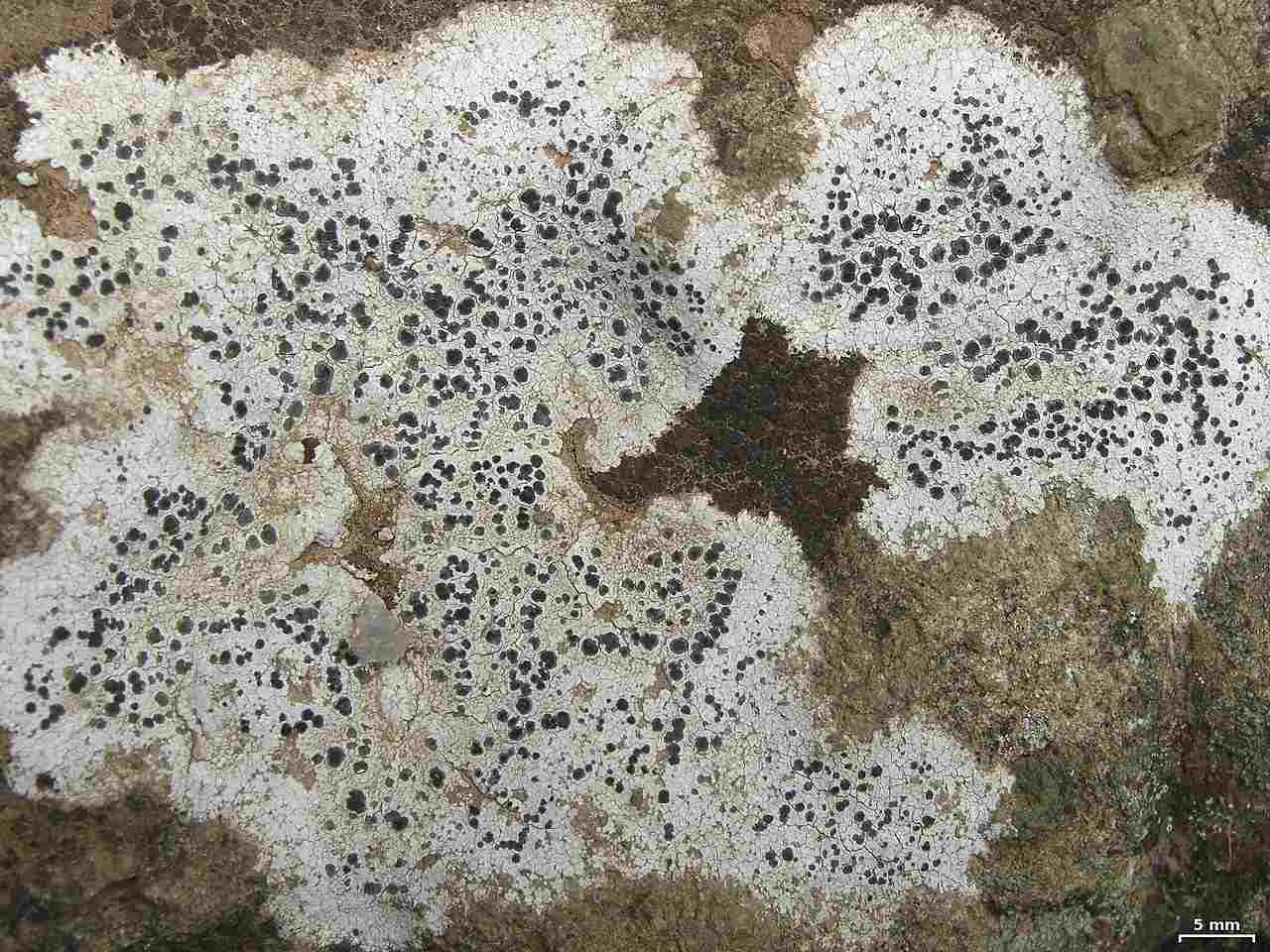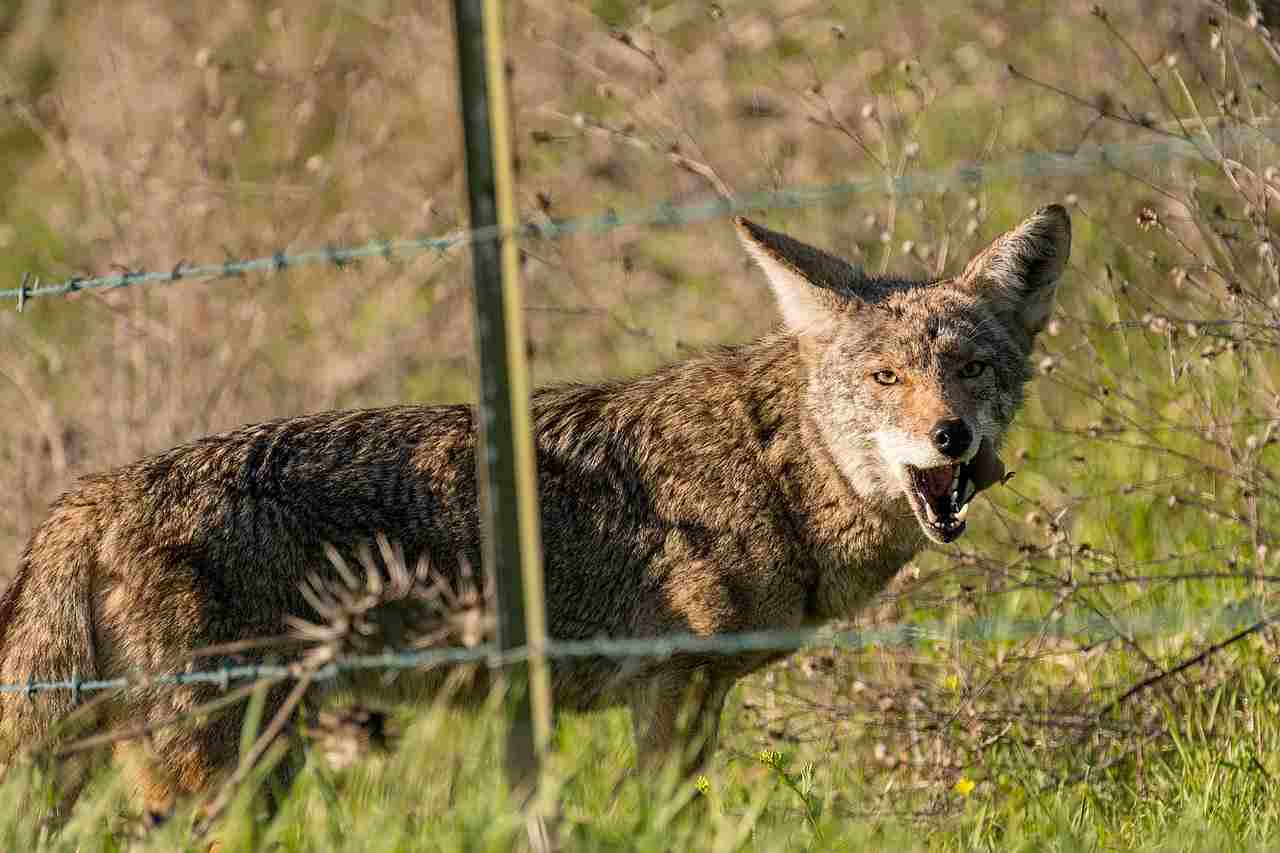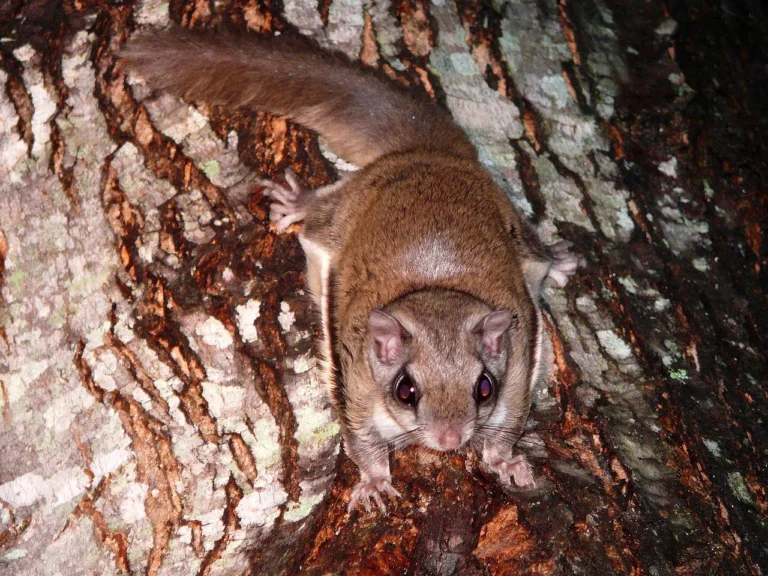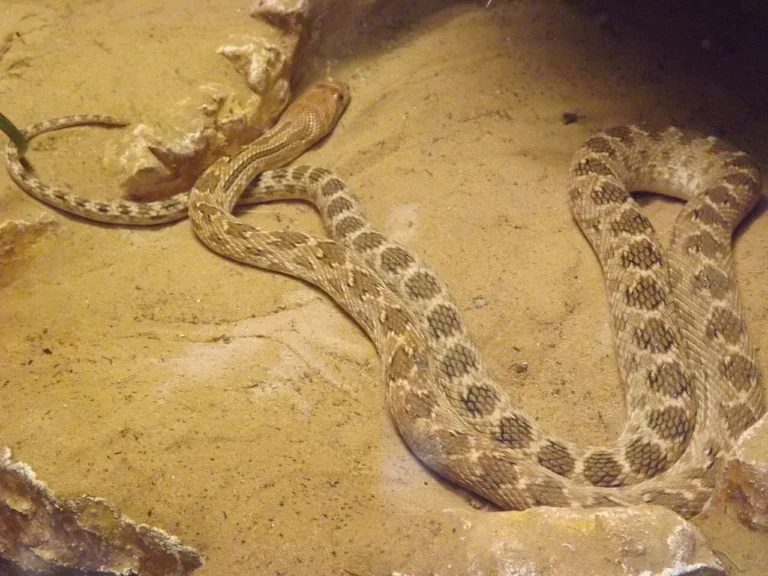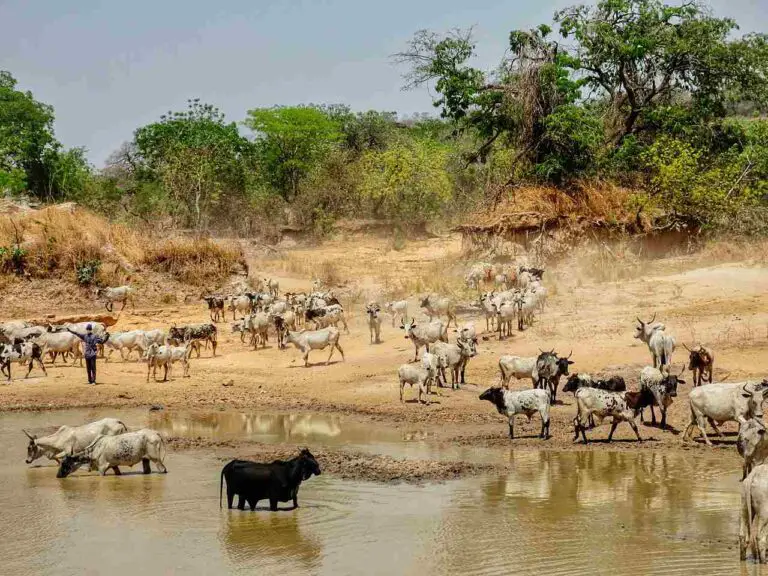5+ Scavengers in The Sonoran Desert Ecosystem Discussed
Examples of scavengers in the Sonoran Desert are vultures, beetles, kit foxes, common ravens, greater roadrunners, and coyotes. These animals play a crucial role in maintaining the ecosystem’s health by consuming dead and decaying organic matter, thereby preventing the spread of disease and aiding in nutrient cycling. While some scavengers like vultures specialize in consuming carrion, others like beetles contribute to decomposition and soil health. Kit foxes, common ravens, greater roadrunners, and coyotes all exhibit adaptive behaviors that allow them to thrive in the harsh desert environment while contributing to the ecological balance through their scavenging activities.
1. Vulture
In the Sonoran Desert, vultures play an essential role in maintaining the ecosystem’s health by consuming carrion and decomposing organic matter. These large birds, predominantly the turkey vulture (Cathartes aura), are easily recognized by their dark plumage, red, bald heads, and long, broad wings designed for soaring. Vultures are experts at spotting potential meals from high in the sky, where they circle and use their acute sense of smell to detect the scent of decaying flesh.
Vultures are social birds, often seen in groups around a carcass. They don’t have strong talons like other birds of prey, relying instead on their sharp beaks to tear flesh from bones. This adaptation, along with their excellent digestive system, allows them to consume carrion that would be toxic to many other creatures, thereby reducing the spread of diseases like anthrax and botulism.
These scavengers are also known for their energy-efficient flight. By riding thermal currents, vultures can soar for hours with minimal effort, covering vast distances in search of food. This behavior is particularly useful in the arid environment of the Sonoran Desert, where food sources can be sparse and scattered.
Vultures in the Sonoran Desert are not only crucial for their scavenging habits but also for their contribution to the cultural landscape. They are often associated with desert folklore and are seen as symbols of death and rebirth, reflecting the cycle of life in the harsh desert environment. By performing their role as nature’s clean-up crew, vultures help sustain the delicate balance of the desert ecosystem.
2. Beetle
In the Sonoran Desert, beetles are among the most diverse and adaptive scavengers, playing a critical role in breaking down organic matter. The desert is home to numerous species of beetles, each with unique adaptations to the arid environment. These insects are instrumental in decomposing plant and animal materials, aiding in nutrient cycling and contributing to soil health.
One of the most fascinating beetles in the Sonoran Desert is the dung beetle. These beetles specialize in feeding on animal feces, rolling it into balls, and burying it underground. This behavior not only provides them with food but also helps to aerate the soil and distribute nutrients. Other beetles, like the darkling beetle, are detritivores, feeding on decaying plant matter, dead insects, and other organic debris. Their presence in the desert ecosystem ensures that nothing goes to waste.
Beetles in the Sonoran Desert have developed unique features to survive the extreme temperatures and scarcity of water. Some beetles, for instance, have hardened exoskeletons that reduce water loss and provide protection from predators. They are also known to be active during cooler times of the day or night, avoiding the scorching heat of the midday sun.
Through their scavenging activities, beetles play a vital role in maintaining the balance of the Sonoran Desert ecosystem. They are an often overlooked but indispensable component of the desert’s complex web of life, contributing to the overall health and sustainability of the environment.
3. Kit Fox
The kit fox (Vulpes macrotis) is a small but highly adaptable scavenger in the Sonoran Desert. With its large ears, slender body, and bushy tail, the kit fox is well-suited to the desert’s harsh conditions. Although it primarily feeds on small mammals and insects, the kit fox is opportunistic and will scavenge carrion when available, particularly when food is scarce.
Kit foxes are nocturnal, hunting and scavenging during the cooler hours of the night to avoid the daytime heat. They use their keen sense of smell and sharp hearing to locate food sources, including carrion left behind by larger predators or roadkill. By scavenging, kit foxes contribute to the cleanup of the desert landscape and help prevent the spread of disease.
These foxes are highly adaptable in their behavior and habitat choice. They often dig burrows in sandy soil, providing shelter from predators and extreme temperatures. Their burrows also serve as a refuge for their young, called kits, which are raised in the safety of the underground tunnels.
Kit foxes face threats from habitat loss, human encroachment, and road traffic, but their scavenging behavior helps them survive in a challenging environment. By utilizing a variety of food sources, including carrion, kit foxes play an important role in the ecosystem, contributing to the natural cycle of decomposition and helping to maintain the health of the Sonoran Desert.
4. Common Raven
The common raven (Corvus corax) is a highly intelligent and versatile scavenger found in the Sonoran Desert. With their glossy black feathers and distinctive croaking calls, ravens are among the most recognizable birds in the desert. They are opportunistic feeders, known for their ability to adapt to a wide range of food sources, from insects and fruits to carrion and discarded human food.
Ravens are social and curious birds, often seen in pairs or small groups. Their intelligence is legendary, and they exhibit problem-solving skills and complex communication patterns. In the Sonoran Desert, ravens can often be found following predators like coyotes, knowing that these animals can lead them to carrion. They also frequent roadsides, where roadkill provides a convenient source of food.
Beyond scavenging, ravens have a significant impact on the desert ecosystem. They are known to cache food, hiding it in various locations for later retrieval. This behavior can lead to the inadvertent dispersal of seeds and other organic material, contributing to plant growth and soil health. Ravens’ adaptability allows them to thrive in both natural and human-altered environments, such as urban areas and farmlands.
Ravens’ role as scavengers is essential in maintaining the cleanliness of the desert landscape. By consuming carrion and other waste, they help prevent the spread of disease and contribute to the ecosystem’s overall health. Their intelligence and adaptability make them a key part of the Sonoran Desert’s diverse web of life.
5. Greater Roadrunner
The greater roadrunner (Geococcyx californianus) is a unique and iconic scavenger of the Sonoran Desert, known for its remarkable speed and striking appearance. With its long legs, slender body, and distinctive crest, the roadrunner is well-adapted to the arid desert environment. Although primarily a predator that hunts lizards, snakes, and insects, the roadrunner is also known to scavenge carrion when available.
Roadrunners are ground-dwelling birds that can reach impressive speeds, allowing them to catch prey or escape from predators. They are diurnal, active during the day when they can use the heat to their advantage. While they are known for their hunting prowess, they will not hesitate to scavenge dead animals, especially when other food sources are limited.
In the Sonoran Desert, roadrunners often patrol wide territories, seeking out food and water sources. They are opportunistic and may follow human activity, scavenging scraps or roadkill. Their adaptability allows them to thrive in diverse environments, from open desert to wooded areas and even suburban neighborhoods.
The greater roadrunner’s role as a scavenger contributes to the cleanliness of the desert ecosystem, as they consume carrion and other organic waste. Their scavenging behavior complements their predatory instincts, ensuring that the roadrunner plays a versatile role in maintaining the ecological balance of the Sonoran Desert. With their distinctive appearance and charismatic behavior, roadrunners are also a beloved symbol of the desert’s unique wildlife.
6. Coyote
The coyote (Canis latrans) is one of the most adaptable scavengers in the Sonoran Desert, known for its cunning and resourcefulness. These mid-sized canids have a diverse diet, allowing them to thrive in a variety of environments, from open desert to mountainous regions. Although coyotes are proficient hunters, preying on small mammals, birds, and reptiles, they often scavenge carrion, making them a crucial part of the desert’s ecosystem.
Coyotes are typically seen alone or in small family groups, with complex social structures. Their keen senses of smell and hearing enable them to detect carrion from a considerable distance, and they are known to follow other predators, such as mountain lions, to scavenge their leftovers. This scavenging behavior reduces waste in the desert and helps limit the spread of disease.
In the Sonoran Desert, coyotes have a reputation for being highly adaptable, not only in their diet but also in their behavior. They can be active at any time of day or night, adjusting their activity patterns based on environmental conditions and human presence. This flexibility allows them to exploit a range of food sources, from natural prey to human-generated waste.
Coyotes play a vital role in the Sonoran Desert ecosystem. Their scavenging helps clean up the environment, and their role as both predators and scavengers contributes to the balance of the food web. Despite facing threats from habitat loss and human encroachment, coyotes have demonstrated a remarkable ability to coexist with people, adapting to urban and suburban areas.
The coyote’s adaptability and resourcefulness have earned it a prominent place in Native American folklore and popular culture, often portrayed as a clever and cunning character. This reflects the coyote’s role in the desert landscape, where it serves as a reminder of the resilience and adaptability required to thrive in such a harsh environment.
*Summary
-
Vultures: Large birds with broad wings that soar and scavenge for carrion. Known for their energy-efficient flight and keen sense of smell, vultures play a crucial role in cleaning the desert by consuming decaying animal matter. They are social birds that reduce disease spread through their scavenging habits.
-
Beetles: Insects with various species contributing to decomposing organic matter. Dung beetles, darkling beetles, and other types of beetles help break down plant and animal materials, supporting nutrient cycling and soil health. Their hardened exoskeletons and adaptive behaviors allow them to thrive in the arid Sonoran Desert.
-
Kit Fox: Small, nocturnal foxes that scavenge and hunt in the Sonoran Desert. They are opportunistic feeders, relying on carrion and small prey. Kit foxes live in burrows to escape the desert’s extreme temperatures and use their keen senses to locate food sources, contributing to the desert’s ecological balance.
-
Common Raven: Intelligent and adaptable birds that scavenge for a variety of food sources, including carrion. Ravens are social, resourceful, and known for caching food, which aids in seed dispersal and soil health. Their role in cleaning up the desert helps prevent the spread of disease.
-
Greater Roadrunner: A fast-moving ground bird that hunts and scavenges in the Sonoran Desert. While primarily a predator, the roadrunner will scavenge carrion when available. Their scavenging behavior complements their predatory skills, helping maintain the cleanliness and ecological balance of the desert.
-
Coyote: Versatile canids with a diverse diet, including scavenging for carrion. Coyotes are highly adaptable, with complex social structures and a keen sense of smell. They play a vital role in the Sonoran Desert ecosystem, reducing waste and maintaining the balance of the food web through their scavenging and predatory behaviors.
| Scavenger |
Role in the Sonoran Desert
|
| Vulture |
Scavenges carrion; energy-efficient soaring; prevents disease spread
|
| Beetle |
Decomposes plant and animal materials; contributes to soil health
|
| Kit Fox |
Scavenges carrion; opportunistic feeder; contributes to ecological balance
|
| Common Raven |
Scavenges a variety of food sources; caches food; aids in seed dispersal
|
| Greater Roadrunner |
Fast-moving ground bird; scavenges carrion; maintains desert cleanliness
|
| Coyote |
Versatile scavenger; contributes to balance of food web; adaptable behavior
|
Related FAQs
Q: What is the primary role of scavengers in the Sonoran Desert? A: Scavengers play a vital role in maintaining the health of the Sonoran Desert by consuming dead and decaying organic matter, thus preventing the spread of disease, aiding in nutrient cycling, and keeping the ecosystem clean.
Q: How do vultures find carrion in the desert? A: Vultures have a keen sense of smell and excellent eyesight, allowing them to detect carrion from great distances while soaring. They often circle in the sky, scanning for signs of food.
Q: Why are beetles important to the Sonoran Desert ecosystem? A: Beetles are crucial for decomposing plant and animal matter, contributing to nutrient cycling and soil health. They break down organic materials, ensuring nothing goes to waste in the desert ecosystem.
Q: What adaptations help the kit fox survive in the desert? A: The kit fox has a slender body and large ears for heat dissipation. It is nocturnal to avoid daytime heat and lives in burrows for shelter. Its opportunistic feeding habits, including scavenging, help it thrive in the desert.
Q: What makes the common raven a successful scavenger? A: The common raven’s intelligence and adaptability make it a successful scavenger. It has a diverse diet, can problem-solve, and often follows other predators to scavenge their leftovers. Ravens also cache food for later use.
Q: How does the greater roadrunner contribute to the Sonoran Desert’s ecosystem? A: The greater roadrunner helps maintain the desert’s cleanliness by scavenging carrion. Although primarily a predator, it complements its diet with scavenging, which aids in waste reduction and ecological balance.
Q: What allows coyotes to be so adaptable in the Sonoran Desert? A: Coyotes’ versatility in diet and behavior allows them to adapt to various environments. They can be active at any time, have complex social structures, and scavenge for carrion when needed. This adaptability helps them thrive in diverse settings, from open desert to urban areas.
